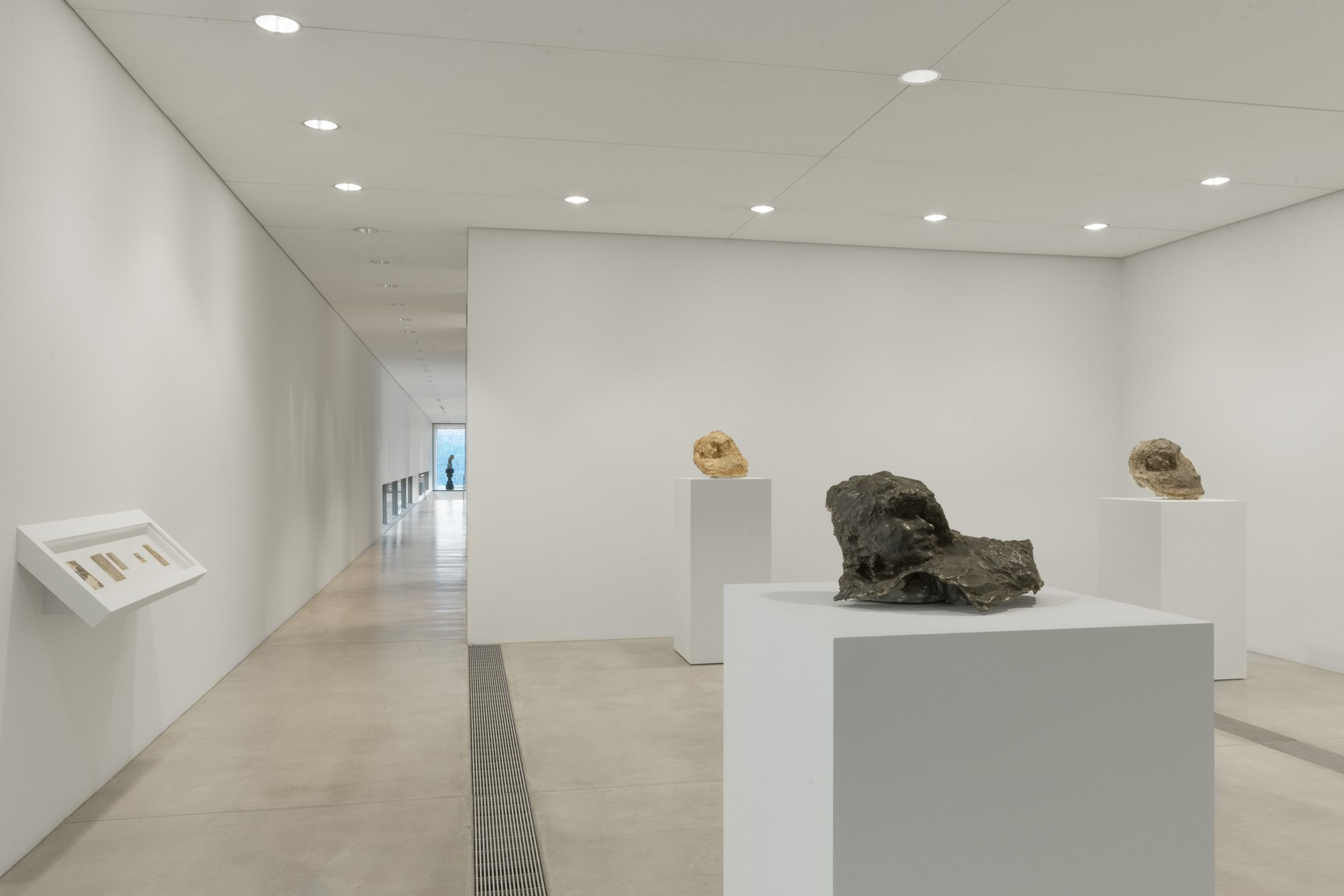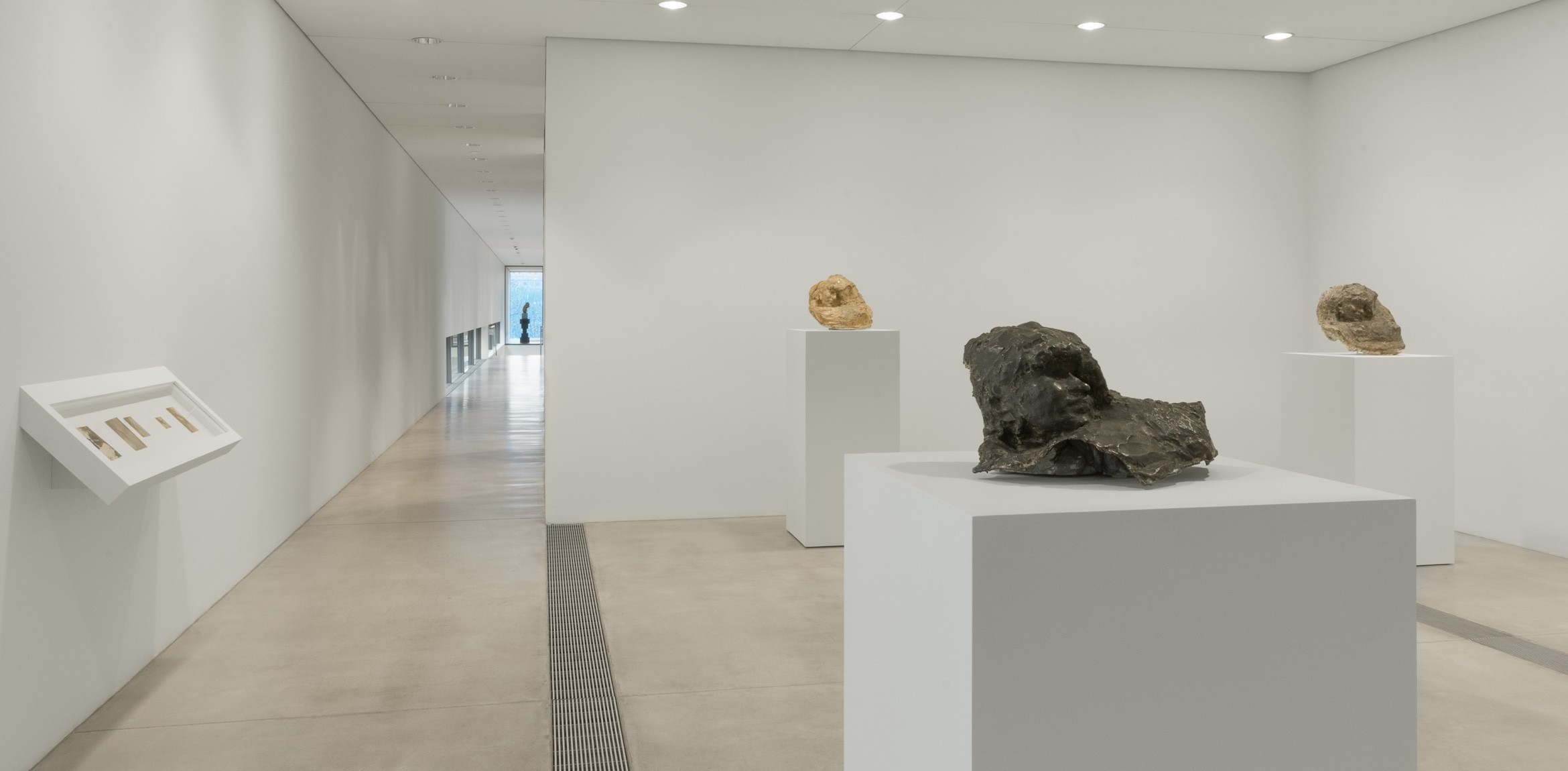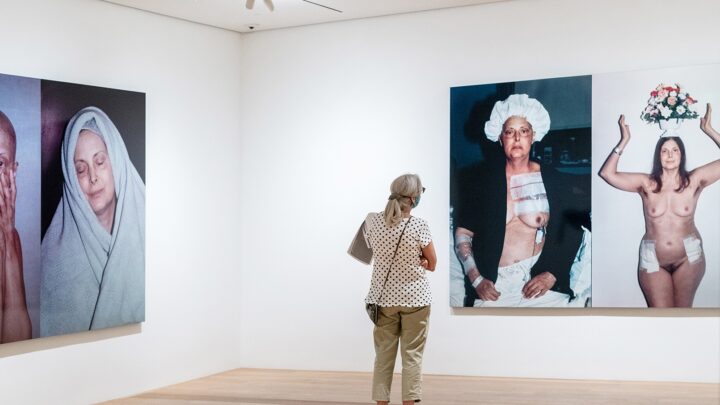Medardo Rosso rarely produced a single sculpture of a unique subject, but instead worked serially, treating each cast individually and experimenting with different materials, patinas, and finishes. With fewer than fifty sculptural subjects developed over the course of his career, Rosso frequently revisited them, often after many years and with different surface treatments to manipulate light and shadow.
Rosso’s sculpture Carne altrui (Flesh of Others, 1883–84) depicts the face of a sleeping prostitute, which can be seen in three versions at the Pulitzer: plaster, bronze, and wax. Rather than focusing on the sexuality of the female figure for this subject, Rosso presented only the woman’s head and amorphous upper body, capturing the glimpse of a quiet, common moment in her life. The plaster cast on view in the exhibition was a “working plaster” from which Rosso created the molds for other versions of Carne altrui. Both the plaster and the wax versions are fuller in form, while the bronze version is heavily reduced—particularly behind the head and upper body. Rosso also altered the angles in which the sculpture was positioned, presenting the woman in a more recumbent pose in the bronze version, while the others are considerably upright. Taken together, these sculptures offer unique insight into Rosso’s unconventional process and innovations in casting.




